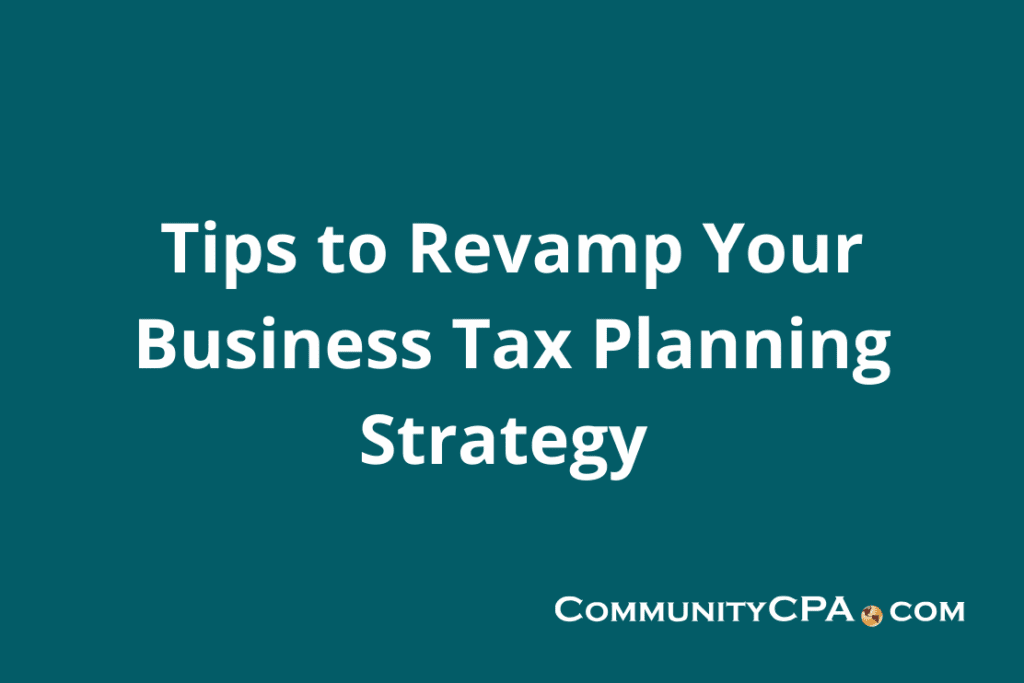Transform your tax strategy with these practical business tips
Effective tax planning is a cornerstone of a successful business strategy. With ever-changing tax laws and regulations, businesses must stay proactive in optimizing their tax strategies to ensure compliance while minimizing tax liability. If you’re ready to rethink your approach to handling taxes, it’s essential to focus on key areas like tax structure, fiscal year planning, and the accounting method that best suits your operations. Below, we’ll explore actionable tips built around these three crucial pillars of tax planning to help your business thrive.
1. Evaluate and Optimize Your Tax Structure
Your business’s tax structure determines how your income is taxed, thus influencing your overall tax obligations. Whether you operate as a sole proprietorship, partnership, corporation, or LLC, each structure offers unique tax benefits and challenges. Here’s how to optimize your tax structure:
- Assess your current structure: Periodically review your tax structure with your Certified Public Accountant (CPA). For instance, transitioning from a sole proprietorship to an S Corporation may provide opportunities to reduce self-employment taxes.
- Factor in growth plans: If your business is expanding, certain structures like C Corporations may offer advantages through reinvested earnings and separate legal entity protections. Conversely, pass-through entities like partnerships or S Corporations avoid double taxation and may appeal to smaller businesses.
- State-level considerations: State taxes and rules vary, so consider whether your current structure is optimal for where your business operates. Some states levy additional taxes on LLCs or S Corporations, so it’s crucial to evaluate both federal and state implications.
- Collaborate with a tax consultant: Our team can offer a tailored strategy for your business, ensuring your structure aligns with both short- and long-term financial goals.
2. Align Your Fiscal Year with Business Cycles
A strategic approach to choosing your fiscal year can improve cash flow management and streamline tax planning processes. Your fiscal year is the 12-month period your business uses to report financial information and file taxes—either a calendar year (January 1–December 31) or another 12-month cycle tailored to your operations.
- Match the fiscal year to industry trends: Businesses with seasonal revenues, such as retail stores or agriculture-based businesses, may benefit from a fiscal year ending after peak seasons. This allows you to better align income and expenses, minimizing taxable income discrepancies.
- Consider tax deferral opportunities: If your profits vary drastically within the year, strategically adjusting your fiscal year can help defer tax liabilities. For instance, transitioning profits into the following year may reduce your current tax burden.
- Monitor changes in tax law: Reassess your fiscal year if major tax legislation is anticipated. Aligning with specific tax breaks or changes can help you make the most of deductions or other benefits.
3. Choose the Right Accounting Method
There are two primary accounting methods to consider when managing tax obligations: the cash basis and accrual basis. Your choice not only affects how your income and expenses are recorded but also can significantly impact your taxable income.
- Cash Method: Income is recorded when received, and expenses are recorded when paid. This is typically simpler and offers advantages for small businesses or those with variable income.
- Accrual Method: Income is recorded when earned, and expenses are recorded when incurred, providing a more accurate financial picture.
Small businesses often benefit from the flexibility of the cash basis, which can allow them to defer income or accelerate expenses for tax purposes. Larger businesses or those looking to showcase financial stability to investors may prefer the accrual method.
Switching from one accounting method to another may require IRS approval and an adjusted tax return for the year of the change. Seek professional guidance from our team to ensure compliance and a seamless transition process.
Bonus Tips for Enhanced Tax Planning
Beyond the three pillars above, there are additional strategies you can implement to create a robust tax planning approach:
- Leverage tax credits and deductions: Stay up-to-date with federal, state, and industry-specific tax credits. These may include research and development credits, energy efficiency incentives, and hiring-related credits.
- Focus on depreciation strategies: Tax rules around asset depreciation continually evolve. Accelerated methods like bonus depreciation can frontload savings to improve cash flow.
- Implement quarterly tax reviews: Regularly compare actual profits to projections and adjust estimated tax payments as needed to avoid penalties.
- Plan for succession or exit: If you’re considering selling the business or transitioning ownership, proper tax planning can significantly impact the outcome. Learn more about the importance of succession planning on our blog.
Why a Revamped Tax Strategy Matters
Continuous evaluation of your tax planning strategy is essential. An optimized approach tailored to your business priorities can lower taxable income, improve cash flow, and ensure compliance with current laws. At Community CPA, our goal is to empower businesses like yours to take charge of their tax planning. Reach out to our team today to schedule a consultation and discover how we can help revolutionize your business tax strategy.
Have more questions? Check out our YouTube channel for further guidance on accounting, payroll, taxes, and more.

